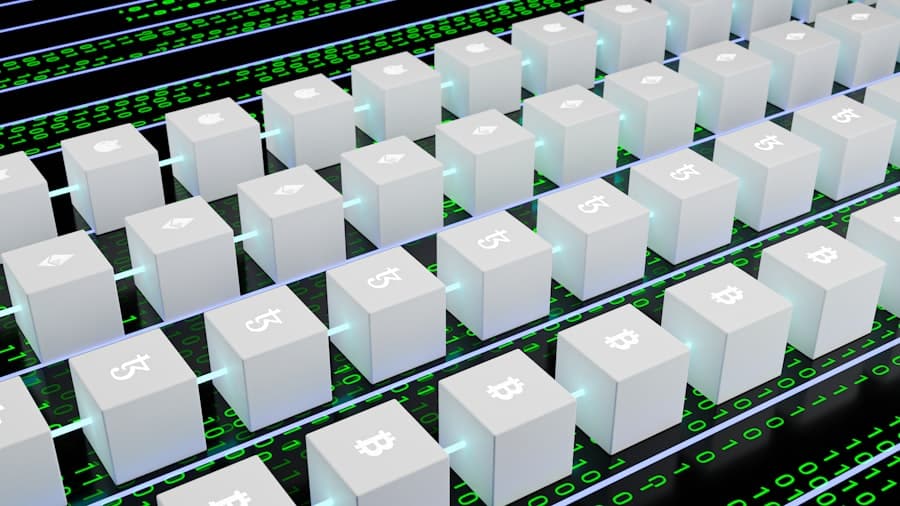Blockchain technology has emerged as a revolutionary force in the digital landscape, fundamentally altering how data is stored, shared, and secured. At its core, blockchain is a decentralized ledger system that records transactions across multiple computers in such a way that the registered transactions cannot be altered retroactively without the consensus of the network. This decentralized nature ensures that no single entity has control over the entire chain, which enhances security and trust among users.
Originally developed as the underlying technology for cryptocurrencies like Bitcoin, blockchain has found applications across various sectors, including finance, supply chain management, healthcare, and now, increasingly, in the realm of electoral processes. The significance of blockchain lies in its ability to provide transparency and immutability. Each block in the chain contains a list of transactions, a timestamp, and a cryptographic hash of the previous block, creating a secure and chronological record.
This structure not only prevents tampering but also allows for real-time auditing and verification of data. As societies grapple with issues of trust and integrity in democratic processes, the potential for blockchain to enhance electoral systems is gaining traction. By leveraging this technology, elections can become more transparent, secure, and efficient, addressing long-standing concerns about voter fraud and manipulation.
Key Takeaways
- Blockchain technology is a decentralized and secure way of recording transactions and data, making it ideal for transparent and tamper-proof elections.
- Blockchain can ensure the authenticity of voter identity and authentication through cryptographic techniques, reducing the risk of fraudulent voting.
- The use of blockchain in securing voting data and counting can prevent unauthorized access and manipulation of election results, ensuring the integrity of the electoral process.
- Blockchain technology can help prevent fraud and manipulation in elections by providing a transparent and immutable record of all transactions and votes.
- The transparency and accessibility of election results can be enhanced through blockchain, allowing for real-time monitoring and verification of the voting process.
The Role of Blockchain in Transparent Elections
The integration of blockchain technology into electoral systems promises to enhance transparency in ways that traditional voting methods cannot achieve. In conventional elections, the processes surrounding voter registration, ballot casting, and vote counting often lack visibility, leading to skepticism among voters regarding the integrity of the results. Blockchain can provide a transparent framework where every transaction—each vote cast—can be recorded on an immutable ledger accessible to all stakeholders.
This level of transparency can significantly bolster public confidence in electoral outcomes. For instance, in countries where election fraud has been a persistent issue, implementing blockchain could allow independent observers to verify the integrity of the voting process in real-time. Voters could track their ballots on the blockchain, ensuring that their votes were counted as intended.
This capability not only empowers voters but also deters potential malfeasance by making it more difficult for any party to manipulate results without detection. The transparency afforded by blockchain could lead to a more engaged electorate, as citizens feel more assured that their voices are being accurately represented.
Ensuring Voter Identity and Authentication

A critical aspect of any electoral process is ensuring that only eligible voters can participate while maintaining the privacy and security of their identities. Blockchain technology offers innovative solutions for voter identity verification and authentication. By utilizing cryptographic techniques, blockchain can create secure digital identities for voters that are both verifiable and anonymous.
This duality is essential; it allows election officials to confirm a voter’s eligibility without exposing personal information that could lead to privacy violations.
Once registered, voters would receive a unique cryptographic key that they would use to cast their votes securely.
This method not only streamlines the registration process but also minimizes the risk of identity theft or fraudulent registrations. Moreover, because the blockchain ledger is immutable, any attempts to alter voter identities or registrations would be easily detectable, further enhancing the integrity of the electoral process.
Securing Voting Data and Counting
The security of voting data is paramount in any election, as breaches or inaccuracies can undermine public trust and lead to contested results. Blockchain technology provides a robust framework for securing voting data throughout the electoral process. Each vote cast can be recorded as a transaction on the blockchain, ensuring that it is time-stamped and linked to previous transactions in a secure manner.
This not only protects against unauthorized access but also ensures that all votes are accounted for in an auditable manner. In practice, this means that once a vote is cast and recorded on the blockchain, it cannot be altered or deleted without consensus from the network participants. This immutability is crucial during the counting process; election officials can rely on the accuracy of the data stored on the blockchain without fear of tampering.
Additionally, smart contracts—self-executing contracts with the terms of the agreement directly written into code—can automate various aspects of vote counting and reporting, further reducing human error and increasing efficiency.
Preventing Fraud and Manipulation
One of the most significant advantages of implementing blockchain technology in elections is its potential to prevent fraud and manipulation. Traditional voting systems are often vulnerable to various forms of electoral fraud, including ballot stuffing, double voting, and tampering with vote counts. Blockchain’s decentralized nature makes it inherently resistant to these types of manipulations.
Since every transaction is recorded across multiple nodes in the network, altering any single entry would require an immense amount of computational power and coordination among malicious actors. Moreover, blockchain can facilitate real-time monitoring of voting activities by authorized observers or independent watchdog organizations. This transparency acts as a deterrent against potential fraudsters who might consider attempting to manipulate results.
For instance, if an election were conducted using blockchain technology, any discrepancies between reported results and those recorded on the blockchain would be immediately apparent to all stakeholders involved. This level of scrutiny not only enhances accountability but also fosters a culture of integrity within electoral processes.
Transparency and Accessibility of Election Results

The accessibility of election results is another area where blockchain technology can make a significant impact. In many traditional electoral systems, results are often delayed due to manual counting processes or bureaucratic inefficiencies. Blockchain can streamline this process by providing immediate access to results as votes are cast and recorded on the ledger.
Voters and stakeholders can view real-time updates on election outcomes without having to wait for official announcements from election authorities. Furthermore, this immediate access to results can help mitigate misinformation campaigns that often arise during elections. When results are transparently available on a public ledger, it becomes increasingly difficult for false narratives to take hold.
This democratization of information fosters greater public engagement and trust in the electoral process.
Challenges and Limitations of Using Blockchain in Elections
Despite its numerous advantages, implementing blockchain technology in electoral processes is not without challenges and limitations. One significant hurdle is the technological infrastructure required to support such systems. Many regions may lack the necessary digital infrastructure or internet connectivity to facilitate widespread adoption of blockchain-based voting systems.
Additionally, there may be resistance from traditional electoral bodies accustomed to established methods of voting and counting. Another concern revolves around the potential for cybersecurity threats. While blockchain itself is designed to be secure against tampering, the systems surrounding it—such as voter registration databases or user interfaces—may still be vulnerable to attacks.
Ensuring comprehensive cybersecurity measures are in place is essential for maintaining public trust in any new voting system. Furthermore, there are legal and regulatory considerations that must be addressed before widespread adoption can occur; laws governing elections may need to be updated to accommodate new technologies like blockchain.
Future Implications and Adoption of Blockchain in Electoral Processes
Looking ahead, the implications of adopting blockchain technology in electoral processes are profound. As more countries explore innovative solutions to enhance democratic participation and integrity, blockchain could become a cornerstone of modern electoral systems. The potential for increased transparency, security, and efficiency aligns with global trends toward digitization and modernization in governance.
Countries like Estonia have already begun experimenting with blockchain-based voting systems, demonstrating its feasibility on a national scale. As these pilot programs yield positive results, other nations may follow suit, leading to a broader acceptance of blockchain as a viable solution for electoral challenges. The future may see an evolution in how citizens engage with their governments through voting—transforming it into a more secure and participatory process that reflects the values of transparency and accountability inherent in democratic societies.
In conclusion, while challenges remain in implementing blockchain technology within electoral frameworks, its potential benefits are significant enough to warrant serious consideration by policymakers worldwide. As trust in traditional electoral processes continues to wane in some regions, exploring innovative solutions like blockchain could pave the way for more resilient democracies in an increasingly digital age.
A related article to How Blockchain is Used in Transparent Elections is “What is NFT Image?” which explores the concept of non-fungible tokens and their application in the digital art world. NFTs are a form of blockchain technology that can be used to verify the authenticity and ownership of digital assets, similar to how blockchain ensures the transparency and security of election processes. To learn more about NFTs and their potential impact on various industries, check out the article here.
FAQs
What is blockchain technology?
Blockchain technology is a decentralized, distributed ledger that records transactions across many computers in such a way that the registered transactions cannot be altered retroactively.
How is blockchain used in transparent elections?
Blockchain can be used in transparent elections by providing a secure and tamper-proof way to record and verify votes. Each vote is recorded as a transaction on the blockchain, and once recorded, it cannot be altered. This ensures the integrity of the voting process and provides transparency to all stakeholders.
What are the benefits of using blockchain in elections?
Using blockchain in elections can provide benefits such as increased transparency, security, and trust in the voting process. It can also help prevent fraud and manipulation of election results.
Are there any challenges to using blockchain in elections?
Challenges to using blockchain in elections include the need for widespread adoption of the technology, ensuring voter privacy and anonymity, and addressing potential technical issues such as scalability and network security.
Has blockchain been used in any real-world elections?
Yes, blockchain has been used in real-world elections in various countries, including the United States, Sierra Leone, and Estonia. These initiatives have aimed to improve the transparency and security of the voting process.

